Left Side Pain and Blood in Stool: Understanding Diverticulitis and Diverticulosis
What are the symptoms of diverticulitis and diverticulosis. How are these conditions diagnosed and treated. What causes left side pain and blood in stool. When should you seek medical attention for abdominal pain.
Understanding Diverticular Diseases: Diverticulitis and Diverticulosis
Diverticular diseases, including diverticulitis and diverticulosis, are conditions that affect the digestive tract, particularly the colon. These conditions can cause significant discomfort and, in some cases, lead to serious complications if left untreated.
Diverticulosis occurs when small, bulging pouches (diverticula) form in the lining of the digestive system, most commonly in the lower part of the colon. While diverticulosis itself may not cause symptoms, it can progress to diverticulitis if these pouches become inflamed or infected.
What is the difference between diverticulosis and diverticulitis?
- Diverticulosis: The presence of diverticula without inflammation or infection
- Diverticulitis: Inflammation or infection of diverticula
Understanding the distinction between these conditions is crucial for proper diagnosis and treatment. While diverticulosis may not require immediate medical attention, diverticulitis can be a serious condition that necessitates prompt care.

Recognizing the Symptoms of Diverticulitis
Diverticulitis can cause a range of symptoms, with the most prominent being pain in the lower left side of the abdomen. This pain may develop suddenly and be severe, or it might start mild and worsen over several days.
What are the common symptoms of diverticulitis?
- Persistent abdominal pain, typically on the lower left side
- Fever and chills
- Nausea or vomiting
- Changes in bowel habits (constipation or diarrhea)
- Blood in stools (in some cases)
It’s important to note that the presence of blood in stools, while not always indicative of diverticulitis, can be a sign of various digestive issues and should be evaluated by a healthcare professional.
Diagnosing Diverticular Diseases
Proper diagnosis of diverticular diseases involves a combination of medical history assessment, physical examination, and diagnostic tests. Healthcare providers use various methods to confirm the presence of diverticula and determine whether inflammation or infection is present.

How are diverticular diseases diagnosed?
- Medical history and physical examination
- Blood tests to check for signs of infection or inflammation
- Imaging studies such as CT scans or colonoscopy
- Stool samples to rule out other digestive conditions
Early diagnosis is crucial for effective treatment and prevention of complications. If you experience persistent abdominal pain or notice blood in your stool, it’s essential to consult a healthcare provider promptly.
Treatment Options for Diverticulitis and Diverticulosis
The treatment approach for diverticular diseases depends on the severity of the condition and the presence of complications. While diverticulosis may not require specific treatment, diverticulitis often necessitates medical intervention.
What are the treatment options for diverticulitis?
- Antibiotics to treat infection
- Pain relievers to manage discomfort
- Dietary modifications (e.g., liquid diet during acute episodes)
- Rest and monitoring
- In severe cases, hospitalization or surgery may be required
For individuals with recurrent diverticulitis or complications, surgical intervention might be necessary to remove the affected portion of the colon.

How can diverticulosis be managed?
- High-fiber diet to promote healthy bowel movements
- Adequate hydration
- Regular exercise
- Avoiding smoking and excessive alcohol consumption
While these lifestyle modifications can help manage diverticulosis, it’s important to consult with a healthcare provider for personalized advice and treatment plans.
Other Causes of Left Side Pain and Blood in Stool
While diverticulitis is a common cause of left side abdominal pain and blood in stool, several other conditions can present with similar symptoms. Understanding these potential causes can help in seeking appropriate medical attention and diagnosis.
What other conditions can cause left side pain and blood in stool?
- Inflammatory Bowel Disease (IBD): Conditions like Crohn’s disease and ulcerative colitis can cause abdominal pain and bloody stools.
- Colorectal Cancer: In some cases, tumors in the colon or rectum can lead to bleeding and abdominal discomfort.
- Hemorrhoids: While usually causing pain in the anal area, hemorrhoids can also result in rectal bleeding.
- Ischemic Colitis: Reduced blood flow to the colon can cause pain and bloody stools.
- Anal Fissures: Small tears in the lining of the anus can cause pain and bleeding during bowel movements.
Given the variety of potential causes, it’s crucial to seek medical evaluation for persistent abdominal pain or blood in the stool to ensure accurate diagnosis and appropriate treatment.

Prevention Strategies for Diverticular Diseases
While it’s not always possible to prevent the development of diverticula, certain lifestyle choices can reduce the risk of complications and promote overall digestive health.
How can you reduce the risk of developing diverticular diseases?
- Maintain a high-fiber diet rich in fruits, vegetables, and whole grains
- Stay well-hydrated by drinking plenty of water throughout the day
- Exercise regularly to promote healthy bowel function
- Avoid smoking and limit alcohol consumption
- Manage weight through a balanced diet and regular physical activity
- Respond promptly to bowel urges and avoid straining during bowel movements
Implementing these preventive measures can not only reduce the risk of diverticular diseases but also contribute to overall digestive health and well-being.
When to Seek Medical Attention
Recognizing when to seek medical care for abdominal pain or changes in bowel habits is crucial for timely diagnosis and treatment of potential digestive issues, including diverticulitis.

When should you consult a healthcare provider for abdominal pain or blood in stool?
- Severe or persistent abdominal pain, especially on the left side
- Blood in stool or rectal bleeding
- Fever accompanied by abdominal pain
- Prolonged changes in bowel habits (e.g., persistent diarrhea or constipation)
- Unexplained weight loss
- Nausea or vomiting that doesn’t resolve
Prompt medical evaluation can help prevent complications and ensure appropriate treatment for underlying conditions.
Living with Diverticular Diseases: Long-term Management and Outlook
For individuals diagnosed with diverticulosis or those who have experienced episodes of diverticulitis, long-term management is key to preventing complications and maintaining digestive health.
What strategies can help in managing diverticular diseases long-term?
- Adhering to a high-fiber diet and staying well-hydrated
- Regular follow-up appointments with healthcare providers
- Monitoring for signs of recurrence or new symptoms
- Maintaining a healthy lifestyle through regular exercise and stress management
- Considering probiotics or fiber supplements as recommended by a healthcare provider
With proper management and lifestyle modifications, many individuals with diverticular diseases can maintain a good quality of life and reduce the risk of complications.
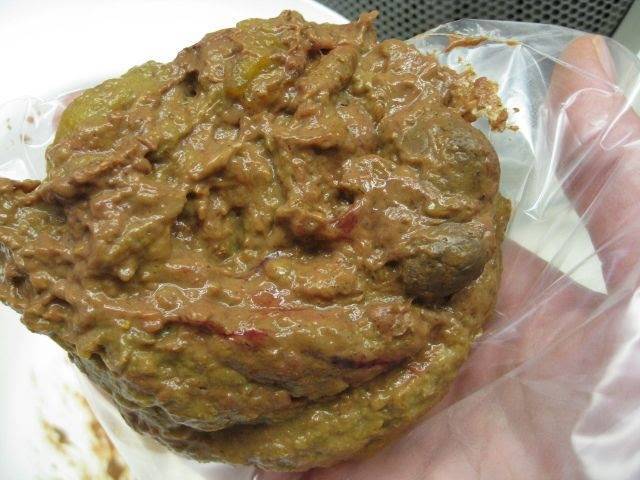
What is the long-term outlook for individuals with diverticular diseases?
The prognosis for individuals with diverticular diseases varies depending on the severity of the condition and adherence to treatment plans. Many people with diverticulosis never develop complications, while others may experience recurrent episodes of diverticulitis.
For those who have had episodes of diverticulitis, the risk of recurrence can be reduced through lifestyle modifications and medical management. In cases where surgery is required, most individuals experience good outcomes and can return to normal activities after recovery.
Ongoing research continues to explore new treatment options and preventive strategies for diverticular diseases, offering hope for improved management and outcomes in the future.
Understanding the nature of diverticular diseases, recognizing symptoms, and following appropriate prevention and treatment strategies can significantly impact long-term health outcomes. By staying informed and working closely with healthcare providers, individuals can effectively manage these conditions and maintain optimal digestive health.

Pain in lower left abdomen: 14 possible causes
There are several possible causes of lower left abdomen pain. Some causes are more common and benign, while others can be serious and require medical attention.
Diverticulitis
Diverticulitis can cause lower left abdominal pain. Diverticulitis occurs when diverticula, which are small pouches in the intestinal wall, become infected and inflamed.
Diverticula form in weak areas of the large intestine, usually in the lower section — the sigmoid colon. They do not always cause symptoms or any problems. Many adults have diverticula, and it is more common in older adults.
In some cases, diverticula may cause some pain or cramping in the lower abdomen. If diverticula become inflamed, it can develop into diverticulitis.
Diverticulitis can cause pain in the lower left side of the abdomen, which may feel sudden and severe, but can also start off mild and get worse over several days. Other symptoms include:
- constipation or diarrhea
- fever and chills
- nausea or vomiting
- occasionally, blood in stools
Diverticulitis can cause serious complications without treatment, so people should consult a doctor if they have any of the above symptoms.
Celiac disease
Celiac disease is a chronic condition that occurs in the digestive tract when a person cannot digest gluten. Gluten is a protein found in wheat and is present in several foods and healthcare products.
When a person has celiac disease, eating gluten triggers their immune system to attack portions of the intestine, causing a range of digestive problems. Without treatment, celiac disease can cause long-term damage to the small intestine.
Symptoms of celiac disease may include:
- pain in the abdomen
- pressure and gas
- bloating
- fatigue
- weight loss
- diarrhea
Children with undiagnosed celiac disease may also experience malnourishment and growth impediments as a result of the condition. People with celiac disease should avoid gluten to prevent symptoms.
A person should speak with a doctor if they think they may have celiac disease.
Gas
It is natural to have gas in the digestive tract and occasional symptoms of gas. Swallowing air more frequently or eating certain foods may increase gas symptoms, such as:
Swallowing air more frequently or eating certain foods may increase gas symptoms, such as:
- burping or belching
- passing gas
- bloating or swelling in the abdomen
Typically, gas is not anything to worry about and will pass out of the body through either the mouth or anus. Causes of gas include:
- digesting foods that are prone to releasing gas
- swallowing air
- smoking
- chewing gum
- overeating
- undigested foods
- certain bacteria in the stomach
- health conditions, such as irritable bowel syndrome (IBS)
People should speak with a doctor if symptoms of gas are bothering them, they have a sudden change in symptoms, or they have additional symptoms, including abdominal pain and:
- constipation
- diarrhea
- constipation
- unexplained weight loss
Lactose intolerance
A person who is lactose intolerant has trouble digesting milk and milk-based products, such as cheese and yogurt. This is because they lack sufficient amounts of an enzyme called lactase. Lactase breaks down the lactose in milk, which consists of the simple sugars glucose and galactose.
This is because they lack sufficient amounts of an enzyme called lactase. Lactase breaks down the lactose in milk, which consists of the simple sugars glucose and galactose.
People with lactose intolerance are unable to digest all the lactose from food and drink. Unabsorbed lactose passes into the colon, where bacteria break it down to create gas and fluid. This increase in fluid and gas can cause symptoms such as:
- pain in the abdomen
- loose stool or diarrhea
- bloating
- gas
- nausea
Inflammatory bowel disease
Crohn’s disease and ulcerative colitis are chronic conditions that can cause painful inflammation anywhere in the digestive tract. The umbrella term for both conditions is inflammatory bowel disease (IBD).
Crohn’s disease is most common in the small intestine, and ulcerative colitis occurs in the large intestine.
There is no clear cause of IBD, but it occurs due to a weakened immune system. Genetics may also play a role. Symptoms of IBD include:
Symptoms of IBD include:
- pain in the abdomen
- persistent diarrhea
- blood in the stool
- fatigue
- weight loss
Indigestion
Indigestion is a group of symptoms that affect the gastrointestinal (GI) system. Indigestion can cause abdominal pain, but this usually occurs in the upper part of the abdomen.
In most cases, indigestion is mild and does not cause complications. Symptoms of indigestion include:
- a burning sensation
- slight pain or discomfort in the abdomen
- heartburn
- bloating
- gas
- uncomfortable fullness after eating a meal
People may wish to try over-the-counter (OTC) indigestion relief medications.
If people have other symptoms alongside indigestion, it may indicate a more serious condition. People will need to see a doctor if indigestion lasts longer than 2 weeks, or if they also experience:
- black, tarry stools
- blood in vomit or persistent vomiting
- unexplained weight loss
- severe or constant pain in the abdomen
- difficulty swallowing
- pain in the chest, jaw, neck, or arm
- shortness of breath
- sweating
- jaundice
Shingles
The same virus that causes chickenpox causes shingles. Once a person has had chickenpox, the virus stays dormant in the body for the rest of their life. Sometimes, the virus can reactivate, causing pain and a rash that may wrap around one side of the abdomen.
Once a person has had chickenpox, the virus stays dormant in the body for the rest of their life. Sometimes, the virus can reactivate, causing pain and a rash that may wrap around one side of the abdomen.
Symptoms of shingles include:
- pain
- itching
- tenderness on the skin
- rash
- fluid-filled blisters
A person may feel tenderness and itchiness on one area of the skin before the rash appears. They may also experience a fever, chills, headache, or upset stomach. Shingles pain may vary from mild to severe.
Doctors usually prescribeantiviral medications for shingles, such as valacyclovir and acyclovir. Additionally, oatmeal baths or cool cloths for the skin may help ease discomfort.
Vaccines are available to help reduce the risk of a person developing shingles later in life.
IBS
IBS is a chronic gastrointestinal disorder. Symptoms of IBS may include:
- abdominal pain
- changes in bowel movements
- constipation or diarrhea
- gas
- bloating
Changes to the nerves and muscles relating to the gut cause IBS.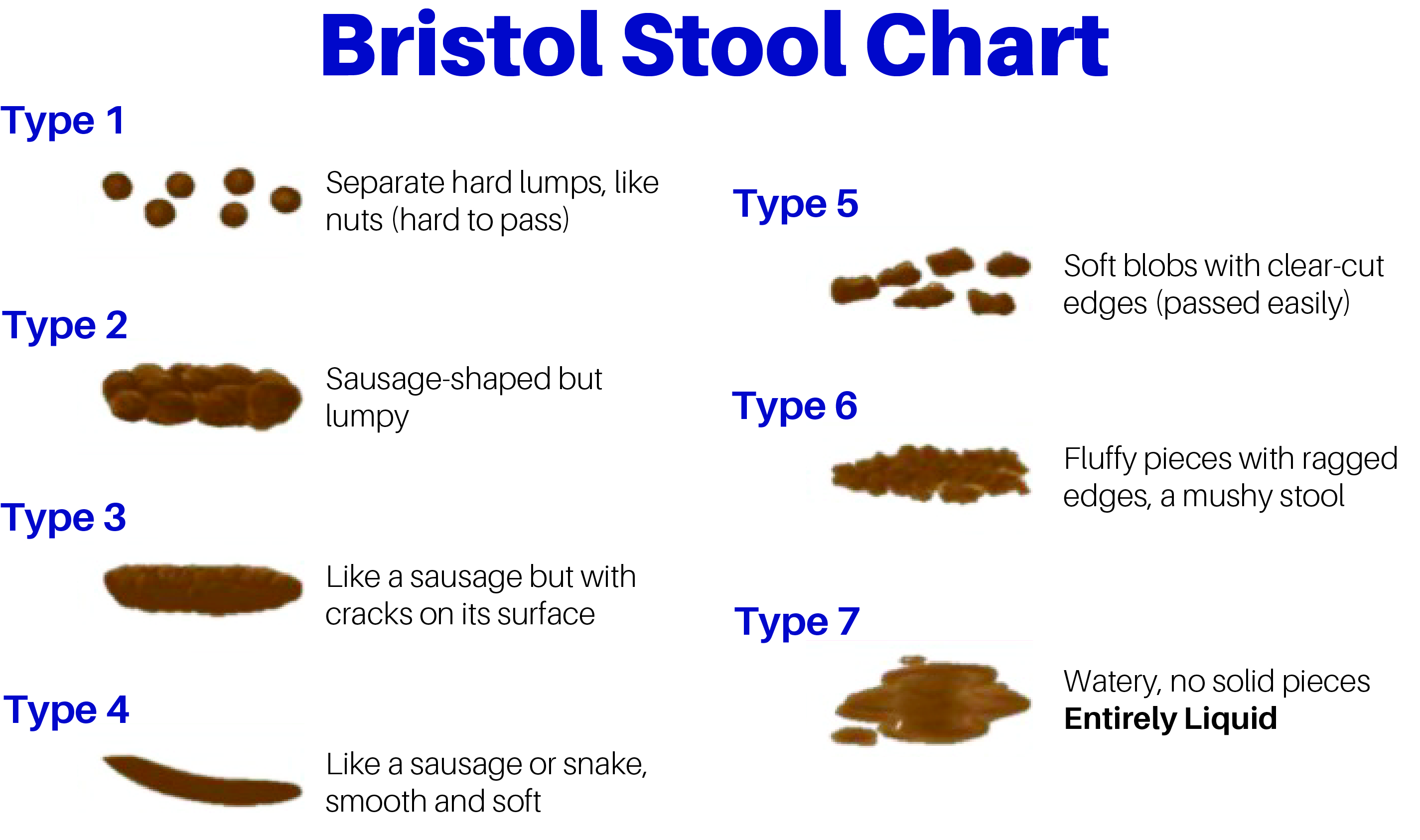 Stress and anxiety may worsen IBS, so relaxation and regular exercise can help. People may also manage IBS with dietary changes, increasing dissolvable fiber intake, and avoiding foods that trigger symptoms.
Stress and anxiety may worsen IBS, so relaxation and regular exercise can help. People may also manage IBS with dietary changes, increasing dissolvable fiber intake, and avoiding foods that trigger symptoms.
Hernia
A hernia occurs when an organ or other body part pushes through the abdominal wall. A bulge may appear in the midsection or near the groin.
Different types of hernias can occur, and they vary according to the underlying cause. If people have symptoms of a hernia, they will need to see a doctor to find out what type of hernia it is and what treatment they may require.
Symptoms of a hernia can include:
- a bulge in the abdomen or groin
- pain or aching in the hernia area
- pressure at the site of the hernia
- increasing discomfort when straining the abdomen
Inguinal hernia
An inguinal hernia usually occurs in the groin area. They are more common in males but can affect females too.
Inguinal hernias can cause complications without treatment, so it is important to see a doctor for a diagnosis as soon as possible. People will usually need surgery to repair an inguinal hernia.
People will usually need surgery to repair an inguinal hernia.
Constipation
Constipation occurs when a person cannot pass a stool, passes hard stools, or passes stools fewer than 3 times a week.
It may occur due to a lack of exercise, fiber, or fluids. Certain medications or IBS can also cause constipation. A person may treat constipation by improving their diet, doing regular exercise, and increasing fluid intake.
Symptoms of constipation include:
- abdominal pain
- straining or pain when passing stool
- dry, hard stools
- having fewer than three bowel movements in a week
- bloating or discomfort
- feeling sluggish
Kidney stones
Most kidney stones occur due to calcium buildup and can form in either the right or left kidney.
A person may develop a kidney stone and not realize they have it until the stone causes problems, such as blocking part of the kidney or causing severe pain as it passes.
Typical symptoms of kidney stones include:
- abdominal pain or ache
- pain when urinating
- nausea or vomiting
- blood in the urine
- fever and chills
- severe lower back pain on one side
Intestinal obstruction
When a blockage occurs in the intestine, food cannot pass through the digestive tract as normal. This results in an obstruction that needs immediate medical attention. Hernias and medical conditions affecting the intestines can lead to intestinal obstruction.
This results in an obstruction that needs immediate medical attention. Hernias and medical conditions affecting the intestines can lead to intestinal obstruction.
People with conditions such as IBD or colon cancer or who have had abdominal surgery may be more at risk of intestinal obstruction.
A person will need to contact a doctor straight away if they have these symptoms of intestinal obstruction:
- severe abdominal pain
- inability to pass stool
- swollen abdomen
- vomiting
- loud noises from the stomach
Ectopic pregnancy
An ectopic pregnancy can occur if a fertilized egg grows outside the uterus, usually in a fallopian tube. As the pregnancy progresses, this can cause the fallopian tube to burst, which can be life threatening.
Symptoms of ectopic pregnancy include:
- mild pain or cramping in the abdomen or pelvis
- lower back pain
- abnormal vaginal bleeding
These symptoms can develop into severe abdominal or pelvic pain, shoulder pain, and dizziness. Ectopic pregnancy is an emergency, and people will require immediate medical attention.
Ectopic pregnancy is an emergency, and people will require immediate medical attention.
Learn more about female anatomy here.
Endometriosis
Endometriosis is a common condition that can affect females. Endometriosis occurs when tissue, which is similar to the lining of the uterus, grows outside the uterus. Endometriosis may occur due to menstrual cycle problems, genetic factors, or problems with the immune system.
The main symptom of endometriosis is pain, which can include:
- painful menstrual cramps
- abdominal pain
- pain in the lower back and pelvis
- pain during or after sex
- during periods, painful bowel movements, or pain when urinating
People may also have bleeding between periods, stomach issues, and difficulty with fertility. Hormone treatments, and in severe cases surgery, can help manage endometriosis symptoms.
To diagnose persistent or severe abdominal pain, a doctor can use a variety of techniques to explore the possible causes and identify a course of treatment. These include:
These include:
- computerized tomography (CT) scans
- ultrasound imaging
- magnetic resonance imaging (MRI) scans
- physical examination
- endoscopy, in which a doctor inserts a tube with an attached light and camera down the throat and into the stomach, producing an image of the lower abdomen
Identifying certain abdominal problems may require repeat visits and close follow-ups.
Once a primary care physician makes a diagnosis, they may refer the individual to a specialist, such as a gastroenterologist, who will be able to provide more focused care.
The type of treatment will depend on the condition causing the pain. A person should speak with a doctor to determine suitable treatment for their condition.
Lower abdominal pain due to an infection, such as diverticulitis, will often require medications and resting as treatment.
Other, more structural, problems, such as a hernia or an intestinal blockage, may require surgery.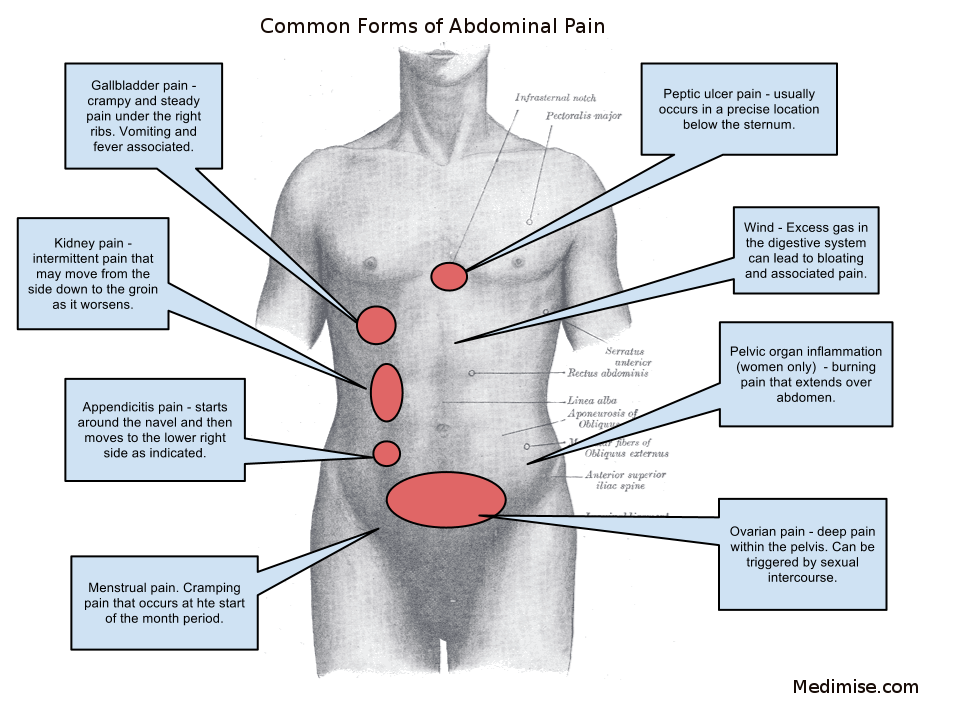
Treatment for constipation and gas often includes basic dietary adjustments and, in severe cases, laxatives. For more chronic lower abdominal pain, such as the pain in IBS or IBD, more careful, long-term dietary management can help to manage symptoms.
Treatment for food intolerances, such as lactose intolerance, often involves excluding that food from the diet.
People should speak with a doctor about any abdominal pain that is persistent or severe or if they have concerns about any symptoms. People will also need to see a doctor if they have:
- blood in stools
- persistent diarrhea, constipation, or change in bowel movements
- unexplained weight loss
A doctor will need to examine chronic or persistent pain to find out the underlying cause and develop a treatment plan.
In many cases, a person is not likely to experience any lasting effects from abdominal pain.
If the abdominal pain is due to a chronic condition, such as Crohn’s disease or celiac disease, a doctor can help a person develop a treatment plan to improve their symptoms in the long term.
People may experience lower left abdominal pain for a range of reasons. Some causes can be temporary, but in some cases, the pain may be a sign of a chronic condition. People should speak with a doctor about any persistent or severe symptoms.
Treatments will depend on the underlying cause but may include lifestyle changes, medications, or surgery.
Pain in lower left abdomen: 14 possible causes
There are several possible causes of lower left abdomen pain. Some causes are more common and benign, while others can be serious and require medical attention.
Diverticulitis
Diverticulitis can cause lower left abdominal pain. Diverticulitis occurs when diverticula, which are small pouches in the intestinal wall, become infected and inflamed.
Diverticula form in weak areas of the large intestine, usually in the lower section — the sigmoid colon. They do not always cause symptoms or any problems. Many adults have diverticula, and it is more common in older adults.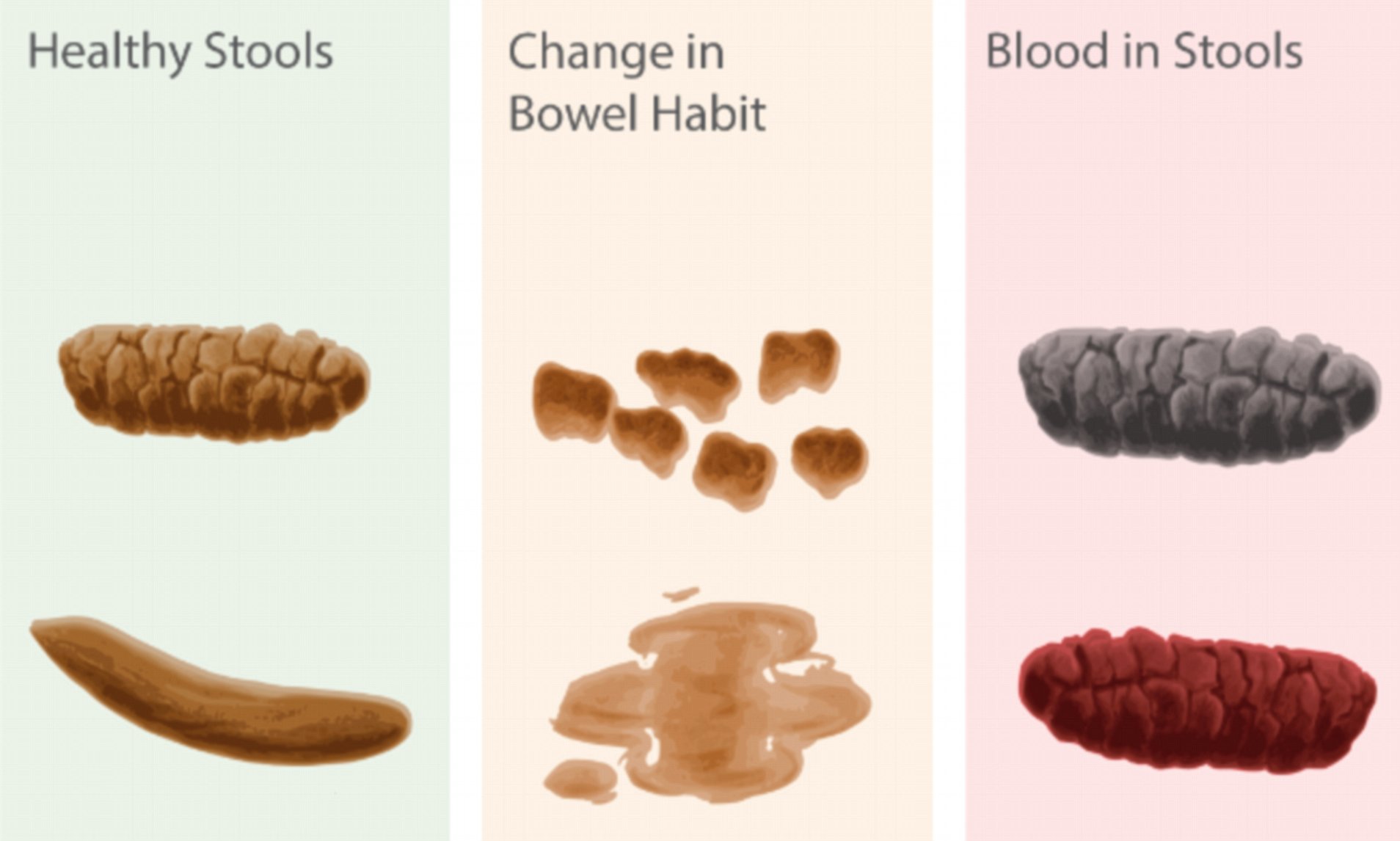
In some cases, diverticula may cause some pain or cramping in the lower abdomen. If diverticula become inflamed, it can develop into diverticulitis.
Diverticulitis can cause pain in the lower left side of the abdomen, which may feel sudden and severe, but can also start off mild and get worse over several days. Other symptoms include:
- constipation or diarrhea
- fever and chills
- nausea or vomiting
- occasionally, blood in stools
Diverticulitis can cause serious complications without treatment, so people should consult a doctor if they have any of the above symptoms.
Celiac disease
Celiac disease is a chronic condition that occurs in the digestive tract when a person cannot digest gluten. Gluten is a protein found in wheat and is present in several foods and healthcare products.
When a person has celiac disease, eating gluten triggers their immune system to attack portions of the intestine, causing a range of digestive problems. Without treatment, celiac disease can cause long-term damage to the small intestine.
Without treatment, celiac disease can cause long-term damage to the small intestine.
Symptoms of celiac disease may include:
- pain in the abdomen
- pressure and gas
- bloating
- fatigue
- weight loss
- diarrhea
Children with undiagnosed celiac disease may also experience malnourishment and growth impediments as a result of the condition. People with celiac disease should avoid gluten to prevent symptoms.
A person should speak with a doctor if they think they may have celiac disease.
Gas
It is natural to have gas in the digestive tract and occasional symptoms of gas. Swallowing air more frequently or eating certain foods may increase gas symptoms, such as:
- burping or belching
- passing gas
- bloating or swelling in the abdomen
Typically, gas is not anything to worry about and will pass out of the body through either the mouth or anus. Causes of gas include:
- digesting foods that are prone to releasing gas
- swallowing air
- smoking
- chewing gum
- overeating
- undigested foods
- certain bacteria in the stomach
- health conditions, such as irritable bowel syndrome (IBS)
People should speak with a doctor if symptoms of gas are bothering them, they have a sudden change in symptoms, or they have additional symptoms, including abdominal pain and:
- constipation
- diarrhea
- constipation
- unexplained weight loss
Lactose intolerance
A person who is lactose intolerant has trouble digesting milk and milk-based products, such as cheese and yogurt. This is because they lack sufficient amounts of an enzyme called lactase. Lactase breaks down the lactose in milk, which consists of the simple sugars glucose and galactose.
This is because they lack sufficient amounts of an enzyme called lactase. Lactase breaks down the lactose in milk, which consists of the simple sugars glucose and galactose.
People with lactose intolerance are unable to digest all the lactose from food and drink. Unabsorbed lactose passes into the colon, where bacteria break it down to create gas and fluid. This increase in fluid and gas can cause symptoms such as:
- pain in the abdomen
- loose stool or diarrhea
- bloating
- gas
- nausea
Inflammatory bowel disease
Crohn’s disease and ulcerative colitis are chronic conditions that can cause painful inflammation anywhere in the digestive tract. The umbrella term for both conditions is inflammatory bowel disease (IBD).
Crohn’s disease is most common in the small intestine, and ulcerative colitis occurs in the large intestine.
There is no clear cause of IBD, but it occurs due to a weakened immune system. Genetics may also play a role. Symptoms of IBD include:
Symptoms of IBD include:
- pain in the abdomen
- persistent diarrhea
- blood in the stool
- fatigue
- weight loss
Indigestion
Indigestion is a group of symptoms that affect the gastrointestinal (GI) system. Indigestion can cause abdominal pain, but this usually occurs in the upper part of the abdomen.
In most cases, indigestion is mild and does not cause complications. Symptoms of indigestion include:
- a burning sensation
- slight pain or discomfort in the abdomen
- heartburn
- bloating
- gas
- uncomfortable fullness after eating a meal
People may wish to try over-the-counter (OTC) indigestion relief medications.
If people have other symptoms alongside indigestion, it may indicate a more serious condition. People will need to see a doctor if indigestion lasts longer than 2 weeks, or if they also experience:
- black, tarry stools
- blood in vomit or persistent vomiting
- unexplained weight loss
- severe or constant pain in the abdomen
- difficulty swallowing
- pain in the chest, jaw, neck, or arm
- shortness of breath
- sweating
- jaundice
Shingles
The same virus that causes chickenpox causes shingles. Once a person has had chickenpox, the virus stays dormant in the body for the rest of their life. Sometimes, the virus can reactivate, causing pain and a rash that may wrap around one side of the abdomen.
Once a person has had chickenpox, the virus stays dormant in the body for the rest of their life. Sometimes, the virus can reactivate, causing pain and a rash that may wrap around one side of the abdomen.
Symptoms of shingles include:
- pain
- itching
- tenderness on the skin
- rash
- fluid-filled blisters
A person may feel tenderness and itchiness on one area of the skin before the rash appears. They may also experience a fever, chills, headache, or upset stomach. Shingles pain may vary from mild to severe.
Doctors usually prescribeantiviral medications for shingles, such as valacyclovir and acyclovir. Additionally, oatmeal baths or cool cloths for the skin may help ease discomfort.
Vaccines are available to help reduce the risk of a person developing shingles later in life.
IBS
IBS is a chronic gastrointestinal disorder. Symptoms of IBS may include:
- abdominal pain
- changes in bowel movements
- constipation or diarrhea
- gas
- bloating
Changes to the nerves and muscles relating to the gut cause IBS. Stress and anxiety may worsen IBS, so relaxation and regular exercise can help. People may also manage IBS with dietary changes, increasing dissolvable fiber intake, and avoiding foods that trigger symptoms.
Stress and anxiety may worsen IBS, so relaxation and regular exercise can help. People may also manage IBS with dietary changes, increasing dissolvable fiber intake, and avoiding foods that trigger symptoms.
Hernia
A hernia occurs when an organ or other body part pushes through the abdominal wall. A bulge may appear in the midsection or near the groin.
Different types of hernias can occur, and they vary according to the underlying cause. If people have symptoms of a hernia, they will need to see a doctor to find out what type of hernia it is and what treatment they may require.
Symptoms of a hernia can include:
- a bulge in the abdomen or groin
- pain or aching in the hernia area
- pressure at the site of the hernia
- increasing discomfort when straining the abdomen
Inguinal hernia
An inguinal hernia usually occurs in the groin area. They are more common in males but can affect females too.
Inguinal hernias can cause complications without treatment, so it is important to see a doctor for a diagnosis as soon as possible. People will usually need surgery to repair an inguinal hernia.
People will usually need surgery to repair an inguinal hernia.
Constipation
Constipation occurs when a person cannot pass a stool, passes hard stools, or passes stools fewer than 3 times a week.
It may occur due to a lack of exercise, fiber, or fluids. Certain medications or IBS can also cause constipation. A person may treat constipation by improving their diet, doing regular exercise, and increasing fluid intake.
Symptoms of constipation include:
- abdominal pain
- straining or pain when passing stool
- dry, hard stools
- having fewer than three bowel movements in a week
- bloating or discomfort
- feeling sluggish
Kidney stones
Most kidney stones occur due to calcium buildup and can form in either the right or left kidney.
A person may develop a kidney stone and not realize they have it until the stone causes problems, such as blocking part of the kidney or causing severe pain as it passes.
Typical symptoms of kidney stones include:
- abdominal pain or ache
- pain when urinating
- nausea or vomiting
- blood in the urine
- fever and chills
- severe lower back pain on one side
Intestinal obstruction
When a blockage occurs in the intestine, food cannot pass through the digestive tract as normal.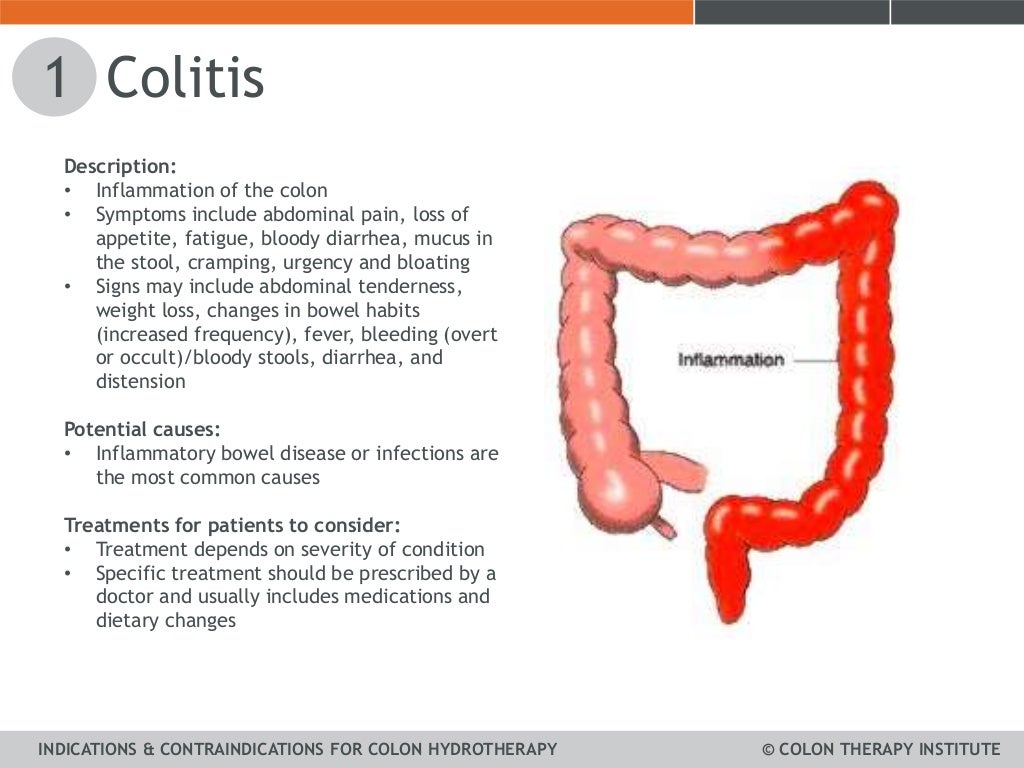 This results in an obstruction that needs immediate medical attention. Hernias and medical conditions affecting the intestines can lead to intestinal obstruction.
This results in an obstruction that needs immediate medical attention. Hernias and medical conditions affecting the intestines can lead to intestinal obstruction.
People with conditions such as IBD or colon cancer or who have had abdominal surgery may be more at risk of intestinal obstruction.
A person will need to contact a doctor straight away if they have these symptoms of intestinal obstruction:
- severe abdominal pain
- inability to pass stool
- swollen abdomen
- vomiting
- loud noises from the stomach
Ectopic pregnancy
An ectopic pregnancy can occur if a fertilized egg grows outside the uterus, usually in a fallopian tube. As the pregnancy progresses, this can cause the fallopian tube to burst, which can be life threatening.
Symptoms of ectopic pregnancy include:
- mild pain or cramping in the abdomen or pelvis
- lower back pain
- abnormal vaginal bleeding
These symptoms can develop into severe abdominal or pelvic pain, shoulder pain, and dizziness.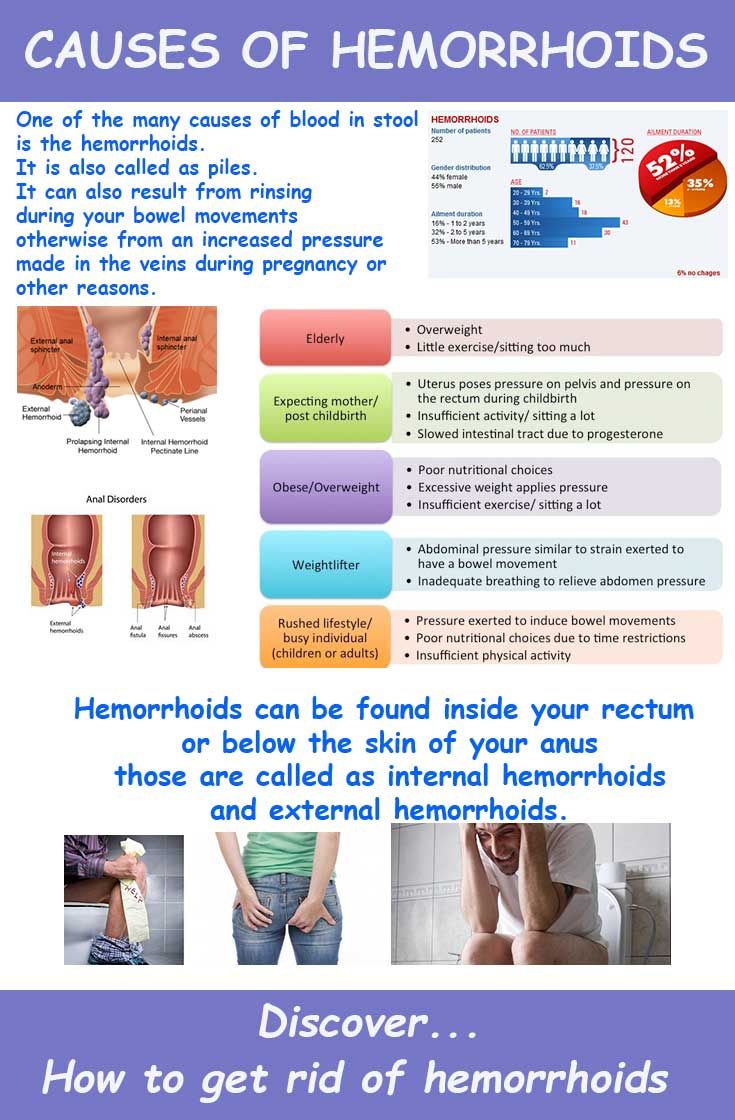 Ectopic pregnancy is an emergency, and people will require immediate medical attention.
Ectopic pregnancy is an emergency, and people will require immediate medical attention.
Learn more about female anatomy here.
Endometriosis
Endometriosis is a common condition that can affect females. Endometriosis occurs when tissue, which is similar to the lining of the uterus, grows outside the uterus. Endometriosis may occur due to menstrual cycle problems, genetic factors, or problems with the immune system.
The main symptom of endometriosis is pain, which can include:
- painful menstrual cramps
- abdominal pain
- pain in the lower back and pelvis
- pain during or after sex
- during periods, painful bowel movements, or pain when urinating
People may also have bleeding between periods, stomach issues, and difficulty with fertility. Hormone treatments, and in severe cases surgery, can help manage endometriosis symptoms.
To diagnose persistent or severe abdominal pain, a doctor can use a variety of techniques to explore the possible causes and identify a course of treatment. These include:
These include:
- computerized tomography (CT) scans
- ultrasound imaging
- magnetic resonance imaging (MRI) scans
- physical examination
- endoscopy, in which a doctor inserts a tube with an attached light and camera down the throat and into the stomach, producing an image of the lower abdomen
Identifying certain abdominal problems may require repeat visits and close follow-ups.
Once a primary care physician makes a diagnosis, they may refer the individual to a specialist, such as a gastroenterologist, who will be able to provide more focused care.
The type of treatment will depend on the condition causing the pain. A person should speak with a doctor to determine suitable treatment for their condition.
Lower abdominal pain due to an infection, such as diverticulitis, will often require medications and resting as treatment.
Other, more structural, problems, such as a hernia or an intestinal blockage, may require surgery.:max_bytes(150000):strip_icc()/advice-about-bright-red-blood-in-stool-796937-v3-004a17fa66384362918ed65f63233acd.png)
Treatment for constipation and gas often includes basic dietary adjustments and, in severe cases, laxatives. For more chronic lower abdominal pain, such as the pain in IBS or IBD, more careful, long-term dietary management can help to manage symptoms.
Treatment for food intolerances, such as lactose intolerance, often involves excluding that food from the diet.
People should speak with a doctor about any abdominal pain that is persistent or severe or if they have concerns about any symptoms. People will also need to see a doctor if they have:
- blood in stools
- persistent diarrhea, constipation, or change in bowel movements
- unexplained weight loss
A doctor will need to examine chronic or persistent pain to find out the underlying cause and develop a treatment plan.
In many cases, a person is not likely to experience any lasting effects from abdominal pain.
If the abdominal pain is due to a chronic condition, such as Crohn’s disease or celiac disease, a doctor can help a person develop a treatment plan to improve their symptoms in the long term.
People may experience lower left abdominal pain for a range of reasons. Some causes can be temporary, but in some cases, the pain may be a sign of a chronic condition. People should speak with a doctor about any persistent or severe symptoms.
Treatments will depend on the underlying cause but may include lifestyle changes, medications, or surgery.
Pain in the left side – causes, diagnosis and treatment
Why it hurts in the left side
Physiological factors
The left side often hurts after exercise. During intense exercise, blood rushes to the abdominal cavity, in particular to the spleen. This explains the characteristic stabbing sensations in the side, which disappear after 5-10 minutes of rest. The next day after training, abdominal pain on the left is possible due to tension in the abdominal muscles. Soreness is aggravated by getting out of bed, turning the body to the left, laughing and straining.
Constipation
Soreness in the left iliac region occurs when there is no bowel movement for 2-3 days or longer. A person complains of a feeling of fullness and dull pain in the lower abdomen on the left. Periodically there are urges to defecate, in which soreness intensifies, excruciating spasms are observed. The intensity of pain depends on the duration of constipation. Patients report the need for strong straining at the time of defecation, burning in the rectum during the passage of dry feces.
A person complains of a feeling of fullness and dull pain in the lower abdomen on the left. Periodically there are urges to defecate, in which soreness intensifies, excruciating spasms are observed. The intensity of pain depends on the duration of constipation. Patients report the need for strong straining at the time of defecation, burning in the rectum during the passage of dry feces.
Irritable bowel syndrome
IBS is the most common pathological cause of pain in the left side. In this disease, pain sensations of various nature are noted: dull, aching, acute, constant or cramping. The most intense pain syndrome occurs in the morning after waking up, it is accompanied by excruciating tenesmus. After a bowel movement, the pain decreases or completely disappears.
In some cases, in order to improve the condition, a person needs to visit the toilet several times in the morning, because after a single bowel movement, there is a feeling of incomplete emptying of the intestine.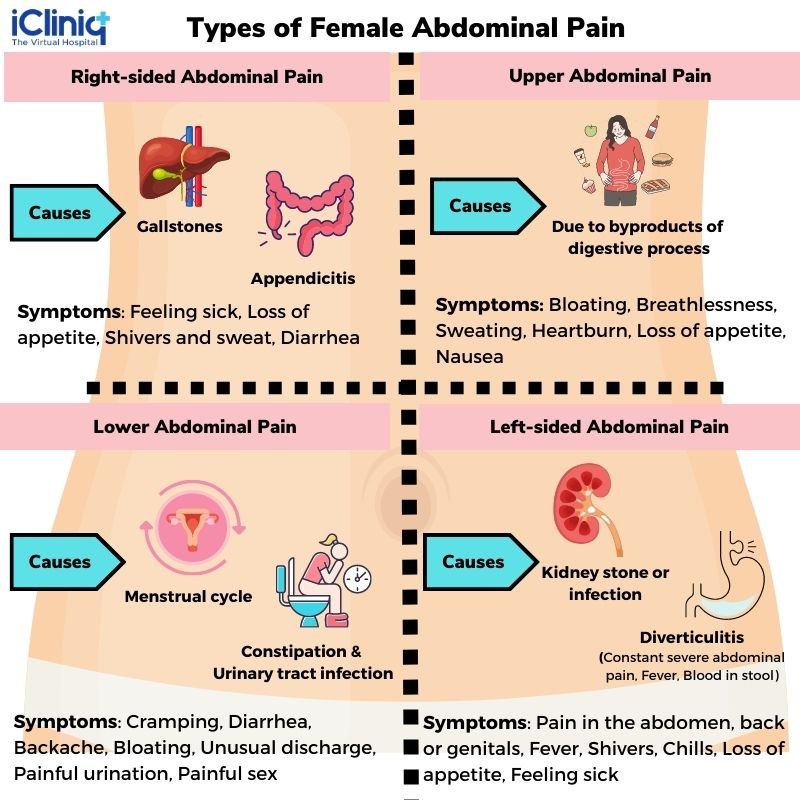 During the day, pain in the left abdomen can be disturbing, but they are of lesser intensity. IBS sufferers do not have night pains that interfere with sleep. Typically, the pain syndrome increases with psycho-emotional overstrain, in women – before and during menstruation.
During the day, pain in the left abdomen can be disturbing, but they are of lesser intensity. IBS sufferers do not have night pains that interfere with sleep. Typically, the pain syndrome increases with psycho-emotional overstrain, in women – before and during menstruation.
Sigmoiditis
With inflammation of the sigmoid colon, patients experience severe paroxysmal pain in the left side, which usually radiates to the lower back, perineum and thigh. The symptom is accompanied by painful false urge to defecate, loose, fetid stools with impurities of mucus and blood. In acute sigmoiditis, such signs are observed constantly, and in chronic pain they are provoked by errors in the diet, physical or mental overstrain.
Diverticulitis
Colon diverticula present with mild pain in the left side of the abdomen that worsens before a bowel movement and disappears after a bowel movement. The intensity of pain increases if there is no stool for 3 or more days.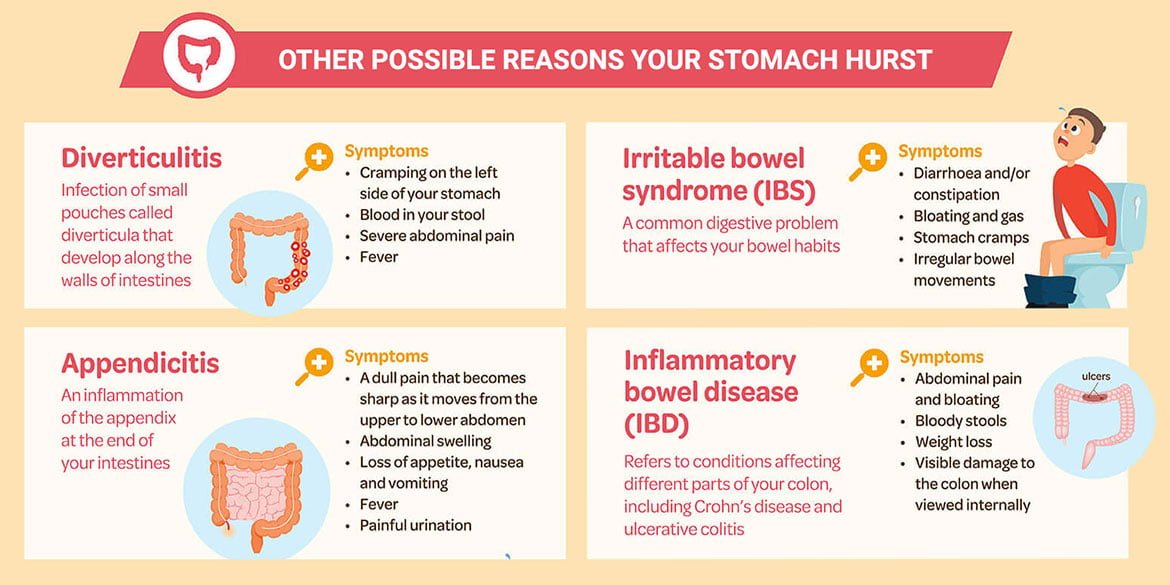 Less commonly, there is paroxysmal pain that lasts for several hours. In addition to the pain syndrome, patients are concerned about the instability of the stool – the alternation of constipation and diarrhea.
Less commonly, there is paroxysmal pain that lasts for several hours. In addition to the pain syndrome, patients are concerned about the instability of the stool – the alternation of constipation and diarrhea.
Non-specific ulcerative colitis
UC is characterized by severe spastic pain on the left above the ilium. With the spread of the pathological process to the descending colon, pain is felt throughout the left side. The pain syndrome is accompanied by constant diarrhea, the stool contains a large amount of blood, mucus. In the period of remission, there are aching pains and discomfort in the abdominal cavity on the left. With NUC, appetite disappears, weight decreases, painful tenesmus is possible.
Chronic pancreatitis
Damage to the pancreas is characterized by mild aching pain in the left side. Soreness worries a person constantly, increases when eating large portions of food, eating fatty or fried foods. Sometimes severe paroxysmal pain develops, which lasts from several minutes to several hours. Pain in the chronic form of pancreatitis is combined with stool instability, flatulence, and rumbling in the abdomen.
Pain in the chronic form of pancreatitis is combined with stool instability, flatulence, and rumbling in the abdomen.
Intestinal infections
Cramping pains in the side on the left are found in infectious processes that occur with colitis syndrome – dysentery, amoebiasis, some forms of escherichiosis and salmonellosis. Severe cramps begin 12 to 48 hours after ingestion of contaminated food or water. They are accompanied by painful tenesmus, diarrhea up to 10-20 times a day. During defecation, feces with blood, mucus are excreted, there is a stool of the “rectal spit” type.
Tumors of the large intestine
With benign intestinal polyps, there are dull pains in the left side without a clear localization. The symptom is not associated with eating and defecation. Increased soreness occurs as the polyps increase in size, which creates obstacles for the movement of feces. A person feels a strong bursting in the flank or iliac region on the left. There are chronic constipation, to excrete feces, patients strain or help themselves with their hands.
There are chronic constipation, to excrete feces, patients strain or help themselves with their hands.
Discomfort in the left side is a sign of cancer of the sigmoid or descending colon. With the growth of the tumor, severe abdominal pains appear, which are constantly present, do not depend on external provoking factors. Against the background of the pain syndrome, alternation of constipation with diarrhea develops, traces of fresh blood are found in the feces. Intolerable pains in the left side indicate the decay or ulceration of the tumor, its germination in neighboring organs.
Hernias
Pain in the lower abdomen is possible with a left-sided inguinal hernia. During the formation of a hernial protrusion, dull pain occurs, which increases with straining, physical activity, and torso tilts. With large hernias, irreducible or strangulated hernias, patients complain of severe pain. More rare causes are a hernia of the Spigelian line on the left, postoperative hernia.
Gynecological diseases
Pain in the left side of women is often caused by pathologies of the internal reproductive organs. Soreness is of a different nature, taking into account the degree of activity of the process and the depth of tissue damage. Gynecological pain in the abdomen is characterized by an increase in 2-3 days before menstruation, irradiation to the pubic region and perineum, dyspareunia (painful sexual intercourse). Most often, pain in the lower abdomen on the left occurs with left-sided adnexitis, endometriosis, ectopic pregnancy.
Damage to the kidneys
Pain in the left side is observed during exacerbation of urolithiasis – left-sided renal colic. Disturbed by excruciating constant or paroxysmal pain that radiates along the ureter to the lower abdomen and perineum. Patients rush around the bed or room, trying to find a position in which the pain will not be so intense. The symptom is accompanied by fever, urinary retention.
Complications of pharmacotherapy
Pain in the left iliac zone occurs with dysbacteriosis (dysbiosis) caused by the use of antibiotics. Patients complain of constant discomfort in the abdomen, cramps in the left side, aggravated after eating and before defecation. When emptying the intestines, a greenish feces with a fetid odor is released, the stool becomes more frequent up to 3-7 times a day. Characteristic signs of dysbiosis: flatulence and rumbling in the intestines, malabsorption syndrome, lack of appetite.
Diagnosis
During the examination, the gastroenterologist draws attention to the exact localization of pain, identified by palpation of the abdomen, evaluates the symptoms of peritoneal irritation. Valuable information can be obtained from a digital examination of the rectum, a standard gynecological examination. To confirm the diagnosis, a complex of laboratory and instrumental examination methods is prescribed, which includes:
- X-ray examinations .
 For a quick assessment of the condition of the intestine, a survey radiograph of the abdominal cavity is performed. To visualize the mucous membrane, to identify ulcerative or tumoral defects, radiography with oral contrast is done, barium enema. CT is used to refine the image.
For a quick assessment of the condition of the intestine, a survey radiograph of the abdominal cavity is performed. To visualize the mucous membrane, to identify ulcerative or tumoral defects, radiography with oral contrast is done, barium enema. CT is used to refine the image. - Endoscopic methods . The main method for diagnosing lesions of the large intestine is colonoscopy, which allows you to examine the intestinal wall, identify signs of an inflammatory or tumor process. During a colonoscopy, a biopsy of suspicious areas of the mucosa is taken. Rectosigmoscopy is rarely used.
- Sonography . Ultrasound is informative for the detection of hernias of the anterior abdominal wall. Ultrasound examination of the pancreas and hepatobiliary zone is indicated for suspected chronic pancreatitis. Women must undergo a pelvic ultrasound to exclude gynecological diseases.
- Fecal tests . The coprogram assesses the levels of muscle fibers, starch grains and neutral fats, an increase in which indicates malabsorption and a problem with the secretion of pancreatic enzymes.
 In the presence of inflammation in the feces, a large number of leukocytes, mucus are found. Stool culture is performed, Gregersen’s reaction.
In the presence of inflammation in the feces, a large number of leukocytes, mucus are found. Stool culture is performed, Gregersen’s reaction. - Additional methods . Sometimes laparoscopy, positron emission tomography is prescribed for differential diagnosis. When examining women with complaints of pain in the left side, colposcopy and hysterosalpingoscopy are performed. Conducted clinical and biochemical blood tests.
Palpation of the left iliac region
Treatment
Help before diagnosis
No treatment is required for colic in the side that occurs during training. It is recommended to temporarily limit physical activity until the discomfort disappears. To get rid of left-sided pain caused by constipation, you need to add fresh or baked vegetables and fruits, sour-milk products, black bread to the diet. These products stimulate intestinal motility.
To reduce pain caused by emotional upheavals (for example, in IBS), it is important to minimize stressful situations, if necessary, visit a psychologist.:max_bytes(150000):strip_icc()/severe-stomach-pain-when-to-go-to-the-er-19452821-5c869d9446e0fb00011366d7.png) Severe pain in the left side indicates severe gastroenterological or gynecological diseases, so self-medication in this case is unacceptable. The combination of a painful attack with a sharp deterioration in the condition is an indication for emergency medical care.
Severe pain in the left side indicates severe gastroenterological or gynecological diseases, so self-medication in this case is unacceptable. The combination of a painful attack with a sharp deterioration in the condition is an indication for emergency medical care.
Conservative therapy
Treatment is selected after the cause of pain in the side is determined. With a strong pain syndrome, anesthesia comes to the fore – non-narcotic and narcotic analgesics, antispasmodics, local anesthetics in the form of blockades are used. To eliminate pain, it is necessary to act on the cause of their appearance, therefore, therapy includes the following drugs:0007
- Probiotics . Medicines restore intestinal microflora and digestion, eliminate discomfort in the left lateral and lower abdomen. They are usually combined with pancreatic enzymes to quickly normalize the digestive tract.
- Laxatives . For chronic constipation, oil-based rectal suppositories are prescribed, which facilitate the act of defecation.
 With their ineffectiveness, herbal remedies, osmotic laxatives, oils for oral administration are used.
With their ineffectiveness, herbal remedies, osmotic laxatives, oils for oral administration are used. - Intestinal antiseptics . In infections and dysbacteriosis, non-absorbable drugs that act in the intestinal lumen are effective. Rarely resort to systemic antibiotics.
- Corticosteroids . Hormones of the adrenal cortex have a powerful anti-inflammatory effect in the treatment of UC. They contribute to the transition of the disease to the stage of remission and reduce pain in the left side. Steroids are often taken in combination with immunosuppressants, anticytokines.
For gynecological pain, preparations of female sex hormones are used. For pain that occurs due to neurological disorders, sedative herbal preparations, mild sleeping pills are indicated. Physiotherapeutic methods are prescribed: electrosleep, neurosedative massage, reflexology. Patients are advised to undergo a course of psychotherapy.
Surgical treatment
Surgical interventions are performed in complicated diverticulitis, ineffectiveness of conservative treatment of ulcerative colitis. An absolute indication for surgical treatment are malignant tumors of the intestine. The scope of the operation is determined by the nature and severity of the pathology. A segmental resection of the colon is performed, an extended resection with the formation of an ileorectal anastomosis or a colostomy.
An absolute indication for surgical treatment are malignant tumors of the intestine. The scope of the operation is determined by the nature and severity of the pathology. A segmental resection of the colon is performed, an extended resection with the formation of an ileorectal anastomosis or a colostomy.
Pain in the left side – causes, diagnosis and treatment
Why it hurts in the left side
Physiological factors
The left side often hurts after exercise. During intense exercise, blood rushes to the abdominal cavity, in particular to the spleen. This explains the characteristic stabbing sensations in the side, which disappear after 5-10 minutes of rest. The next day after training, abdominal pain on the left is possible due to tension in the abdominal muscles. Soreness is aggravated by getting out of bed, turning the body to the left, laughing and straining.
Constipation
Soreness in the left iliac region occurs when there is no bowel movement for 2-3 days or longer.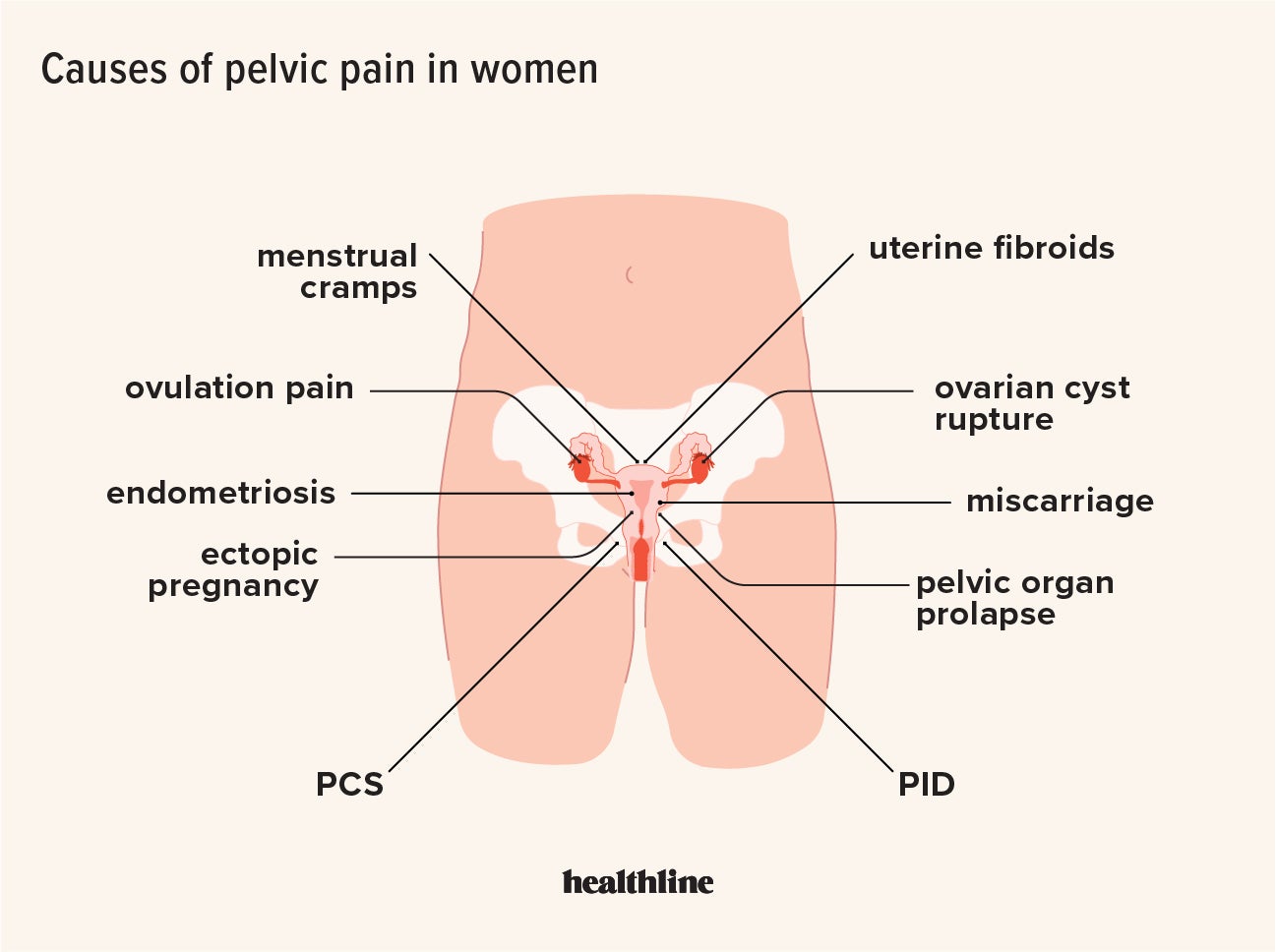 A person complains of a feeling of fullness and dull pain in the lower abdomen on the left. Periodically there are urges to defecate, in which soreness intensifies, excruciating spasms are observed. The intensity of pain depends on the duration of constipation. Patients report the need for strong straining at the time of defecation, burning in the rectum during the passage of dry feces.
A person complains of a feeling of fullness and dull pain in the lower abdomen on the left. Periodically there are urges to defecate, in which soreness intensifies, excruciating spasms are observed. The intensity of pain depends on the duration of constipation. Patients report the need for strong straining at the time of defecation, burning in the rectum during the passage of dry feces.
Irritable bowel syndrome
IBS is the most common pathological cause of pain in the left side. In this disease, pain sensations of various nature are noted: dull, aching, acute, constant or cramping. The most intense pain syndrome occurs in the morning after waking up, it is accompanied by excruciating tenesmus. After a bowel movement, the pain decreases or completely disappears.
In some cases, in order to improve the condition, a person needs to visit the toilet several times in the morning, because after a single bowel movement, there is a feeling of incomplete emptying of the intestine. During the day, pain in the left abdomen can be disturbing, but they are of lesser intensity. IBS sufferers do not have night pains that interfere with sleep. Typically, the pain syndrome increases with psycho-emotional overstrain, in women – before and during menstruation.
During the day, pain in the left abdomen can be disturbing, but they are of lesser intensity. IBS sufferers do not have night pains that interfere with sleep. Typically, the pain syndrome increases with psycho-emotional overstrain, in women – before and during menstruation.
Sigmoiditis
With inflammation of the sigmoid colon, patients experience severe paroxysmal pain in the left side, which usually radiates to the lower back, perineum and thigh. The symptom is accompanied by painful false urge to defecate, loose, fetid stools with impurities of mucus and blood. In acute sigmoiditis, such signs are observed constantly, and in chronic pain they are provoked by errors in the diet, physical or mental overstrain.
Diverticulitis
Colon diverticula present with mild pain in the left side of the abdomen that worsens before a bowel movement and disappears after a bowel movement. The intensity of pain increases if there is no stool for 3 or more days. Less commonly, there is paroxysmal pain that lasts for several hours. In addition to the pain syndrome, patients are concerned about the instability of the stool – the alternation of constipation and diarrhea.
Less commonly, there is paroxysmal pain that lasts for several hours. In addition to the pain syndrome, patients are concerned about the instability of the stool – the alternation of constipation and diarrhea.
Non-specific ulcerative colitis
UC is characterized by severe spastic pain on the left above the ilium. With the spread of the pathological process to the descending colon, pain is felt throughout the left side. The pain syndrome is accompanied by constant diarrhea, the stool contains a large amount of blood, mucus. In the period of remission, there are aching pains and discomfort in the abdominal cavity on the left. With NUC, appetite disappears, weight decreases, painful tenesmus is possible.
Chronic pancreatitis
Damage to the pancreas is characterized by mild aching pain in the left side. Soreness worries a person constantly, increases when eating large portions of food, eating fatty or fried foods. Sometimes severe paroxysmal pain develops, which lasts from several minutes to several hours.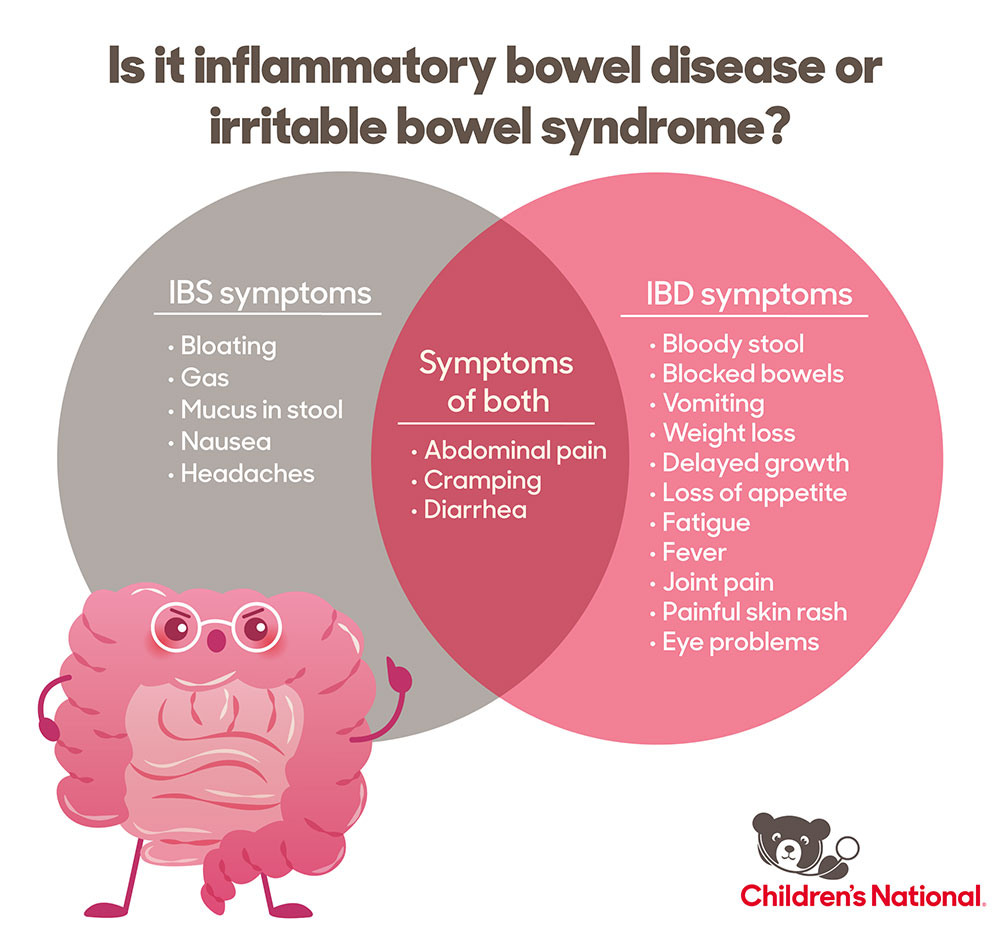 Pain in the chronic form of pancreatitis is combined with stool instability, flatulence, and rumbling in the abdomen.
Pain in the chronic form of pancreatitis is combined with stool instability, flatulence, and rumbling in the abdomen.
Intestinal infections
Cramping pains in the side on the left are found in infectious processes that occur with colitis syndrome – dysentery, amoebiasis, some forms of escherichiosis and salmonellosis. Severe cramps begin 12 to 48 hours after ingestion of contaminated food or water. They are accompanied by painful tenesmus, diarrhea up to 10-20 times a day. During defecation, feces with blood, mucus are excreted, there is a stool of the “rectal spit” type.
Tumors of the large intestine
With benign intestinal polyps, there are dull pains in the left side without a clear localization. The symptom is not associated with eating and defecation. Increased soreness occurs as the polyps increase in size, which creates obstacles for the movement of feces. A person feels a strong bursting in the flank or iliac region on the left.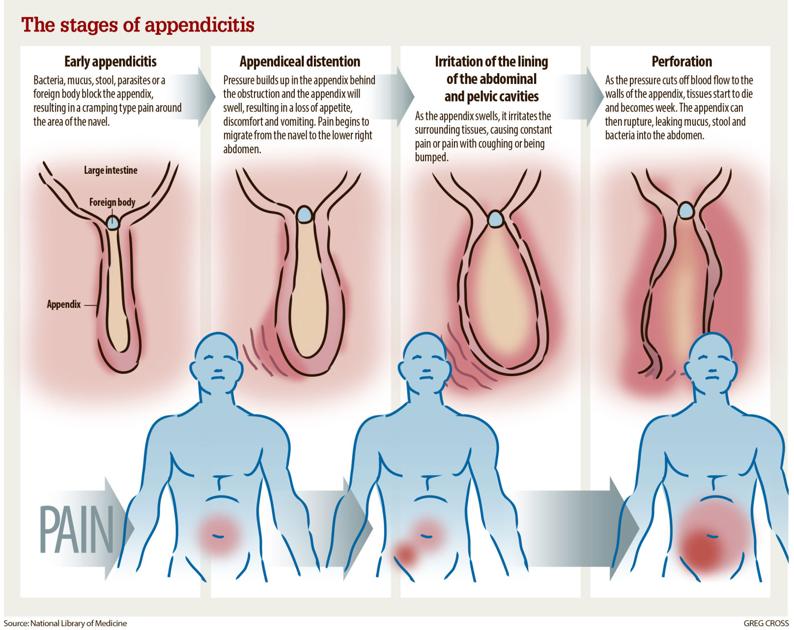 There are chronic constipation, to excrete feces, patients strain or help themselves with their hands.
There are chronic constipation, to excrete feces, patients strain or help themselves with their hands.
Discomfort in the left side is a sign of cancer of the sigmoid or descending colon. With the growth of the tumor, severe abdominal pains appear, which are constantly present, do not depend on external provoking factors. Against the background of the pain syndrome, alternation of constipation with diarrhea develops, traces of fresh blood are found in the feces. Intolerable pains in the left side indicate the decay or ulceration of the tumor, its germination in neighboring organs.
Hernias
Pain in the lower abdomen is possible with a left-sided inguinal hernia. During the formation of a hernial protrusion, dull pain occurs, which increases with straining, physical activity, and torso tilts. With large hernias, irreducible or strangulated hernias, patients complain of severe pain. More rare causes are a hernia of the Spigelian line on the left, postoperative hernia.
Gynecological diseases
Pain in the left side of women is often caused by pathologies of the internal reproductive organs. Soreness is of a different nature, taking into account the degree of activity of the process and the depth of tissue damage. Gynecological pain in the abdomen is characterized by an increase in 2-3 days before menstruation, irradiation to the pubic region and perineum, dyspareunia (painful sexual intercourse). Most often, pain in the lower abdomen on the left occurs with left-sided adnexitis, endometriosis, ectopic pregnancy.
Damage to the kidneys
Pain in the left side is observed during exacerbation of urolithiasis – left-sided renal colic. Disturbed by excruciating constant or paroxysmal pain that radiates along the ureter to the lower abdomen and perineum. Patients rush around the bed or room, trying to find a position in which the pain will not be so intense. The symptom is accompanied by fever, urinary retention.
Complications of pharmacotherapy
Pain in the left iliac zone occurs with dysbacteriosis (dysbiosis) caused by the use of antibiotics. Patients complain of constant discomfort in the abdomen, cramps in the left side, aggravated after eating and before defecation. When emptying the intestines, a greenish feces with a fetid odor is released, the stool becomes more frequent up to 3-7 times a day. Characteristic signs of dysbiosis: flatulence and rumbling in the intestines, malabsorption syndrome, lack of appetite.
Diagnosis
During the examination, the gastroenterologist draws attention to the exact localization of pain, identified by palpation of the abdomen, evaluates the symptoms of peritoneal irritation. Valuable information can be obtained from a digital examination of the rectum, a standard gynecological examination. To confirm the diagnosis, a complex of laboratory and instrumental examination methods is prescribed, which includes:
- X-ray examinations .
 For a quick assessment of the condition of the intestine, a survey radiograph of the abdominal cavity is performed. To visualize the mucous membrane, to identify ulcerative or tumoral defects, radiography with oral contrast is done, barium enema. CT is used to refine the image.
For a quick assessment of the condition of the intestine, a survey radiograph of the abdominal cavity is performed. To visualize the mucous membrane, to identify ulcerative or tumoral defects, radiography with oral contrast is done, barium enema. CT is used to refine the image. - Endoscopic methods . The main method for diagnosing lesions of the large intestine is colonoscopy, which allows you to examine the intestinal wall, identify signs of an inflammatory or tumor process. During a colonoscopy, a biopsy of suspicious areas of the mucosa is taken. Rectosigmoscopy is rarely used.
- Sonography . Ultrasound is informative for the detection of hernias of the anterior abdominal wall. Ultrasound examination of the pancreas and hepatobiliary zone is indicated for suspected chronic pancreatitis. Women must undergo a pelvic ultrasound to exclude gynecological diseases.
- Fecal tests . The coprogram assesses the levels of muscle fibers, starch grains and neutral fats, an increase in which indicates malabsorption and a problem with the secretion of pancreatic enzymes.
 In the presence of inflammation in the feces, a large number of leukocytes, mucus are found. Stool culture is performed, Gregersen’s reaction.
In the presence of inflammation in the feces, a large number of leukocytes, mucus are found. Stool culture is performed, Gregersen’s reaction. - Additional methods . Sometimes laparoscopy, positron emission tomography is prescribed for differential diagnosis. When examining women with complaints of pain in the left side, colposcopy and hysterosalpingoscopy are performed. Conducted clinical and biochemical blood tests.
Palpation of the left iliac region
Treatment
Help before diagnosis
No treatment is required for colic in the side that occurs during training. It is recommended to temporarily limit physical activity until the discomfort disappears. To get rid of left-sided pain caused by constipation, you need to add fresh or baked vegetables and fruits, sour-milk products, black bread to the diet. These products stimulate intestinal motility.
To reduce pain caused by emotional upheavals (for example, in IBS), it is important to minimize stressful situations, if necessary, visit a psychologist. Severe pain in the left side indicates severe gastroenterological or gynecological diseases, so self-medication in this case is unacceptable. The combination of a painful attack with a sharp deterioration in the condition is an indication for emergency medical care.
Severe pain in the left side indicates severe gastroenterological or gynecological diseases, so self-medication in this case is unacceptable. The combination of a painful attack with a sharp deterioration in the condition is an indication for emergency medical care.
Conservative therapy
Treatment is selected after the cause of pain in the side is determined. With a strong pain syndrome, anesthesia comes to the fore – non-narcotic and narcotic analgesics, antispasmodics, local anesthetics in the form of blockades are used. To eliminate pain, it is necessary to act on the cause of their appearance, therefore, therapy includes the following drugs:0007
- Probiotics . Medicines restore intestinal microflora and digestion, eliminate discomfort in the left lateral and lower abdomen. They are usually combined with pancreatic enzymes to quickly normalize the digestive tract.
- Laxatives . For chronic constipation, oil-based rectal suppositories are prescribed, which facilitate the act of defecation.
 With their ineffectiveness, herbal remedies, osmotic laxatives, oils for oral administration are used.
With their ineffectiveness, herbal remedies, osmotic laxatives, oils for oral administration are used. - Intestinal antiseptics . In infections and dysbacteriosis, non-absorbable drugs that act in the intestinal lumen are effective. Rarely resort to systemic antibiotics.
- Corticosteroids . Hormones of the adrenal cortex have a powerful anti-inflammatory effect in the treatment of UC. They contribute to the transition of the disease to the stage of remission and reduce pain in the left side. Steroids are often taken in combination with immunosuppressants, anticytokines.
For gynecological pain, preparations of female sex hormones are used. For pain that occurs due to neurological disorders, sedative herbal preparations, mild sleeping pills are indicated. Physiotherapeutic methods are prescribed: electrosleep, neurosedative massage, reflexology. Patients are advised to undergo a course of psychotherapy.
Surgical treatment
Surgical interventions are performed in complicated diverticulitis, ineffectiveness of conservative treatment of ulcerative colitis.

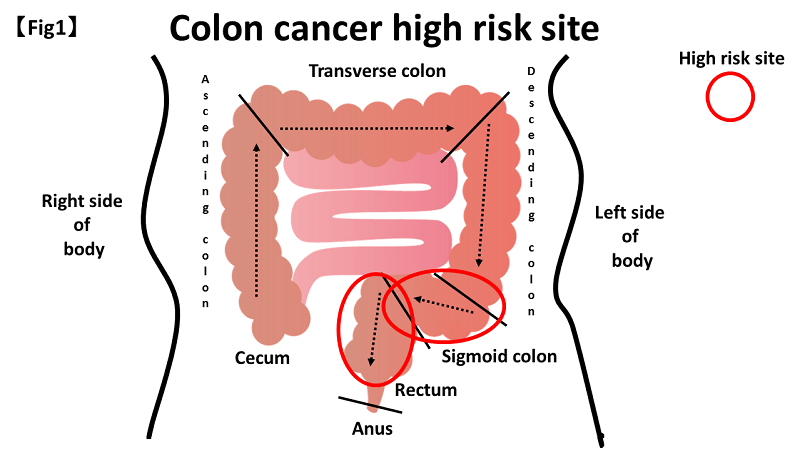 For a quick assessment of the condition of the intestine, a survey radiograph of the abdominal cavity is performed. To visualize the mucous membrane, to identify ulcerative or tumoral defects, radiography with oral contrast is done, barium enema. CT is used to refine the image.
For a quick assessment of the condition of the intestine, a survey radiograph of the abdominal cavity is performed. To visualize the mucous membrane, to identify ulcerative or tumoral defects, radiography with oral contrast is done, barium enema. CT is used to refine the image. In the presence of inflammation in the feces, a large number of leukocytes, mucus are found. Stool culture is performed, Gregersen’s reaction.
In the presence of inflammation in the feces, a large number of leukocytes, mucus are found. Stool culture is performed, Gregersen’s reaction. With their ineffectiveness, herbal remedies, osmotic laxatives, oils for oral administration are used.
With their ineffectiveness, herbal remedies, osmotic laxatives, oils for oral administration are used. For a quick assessment of the condition of the intestine, a survey radiograph of the abdominal cavity is performed. To visualize the mucous membrane, to identify ulcerative or tumoral defects, radiography with oral contrast is done, barium enema. CT is used to refine the image.
For a quick assessment of the condition of the intestine, a survey radiograph of the abdominal cavity is performed. To visualize the mucous membrane, to identify ulcerative or tumoral defects, radiography with oral contrast is done, barium enema. CT is used to refine the image.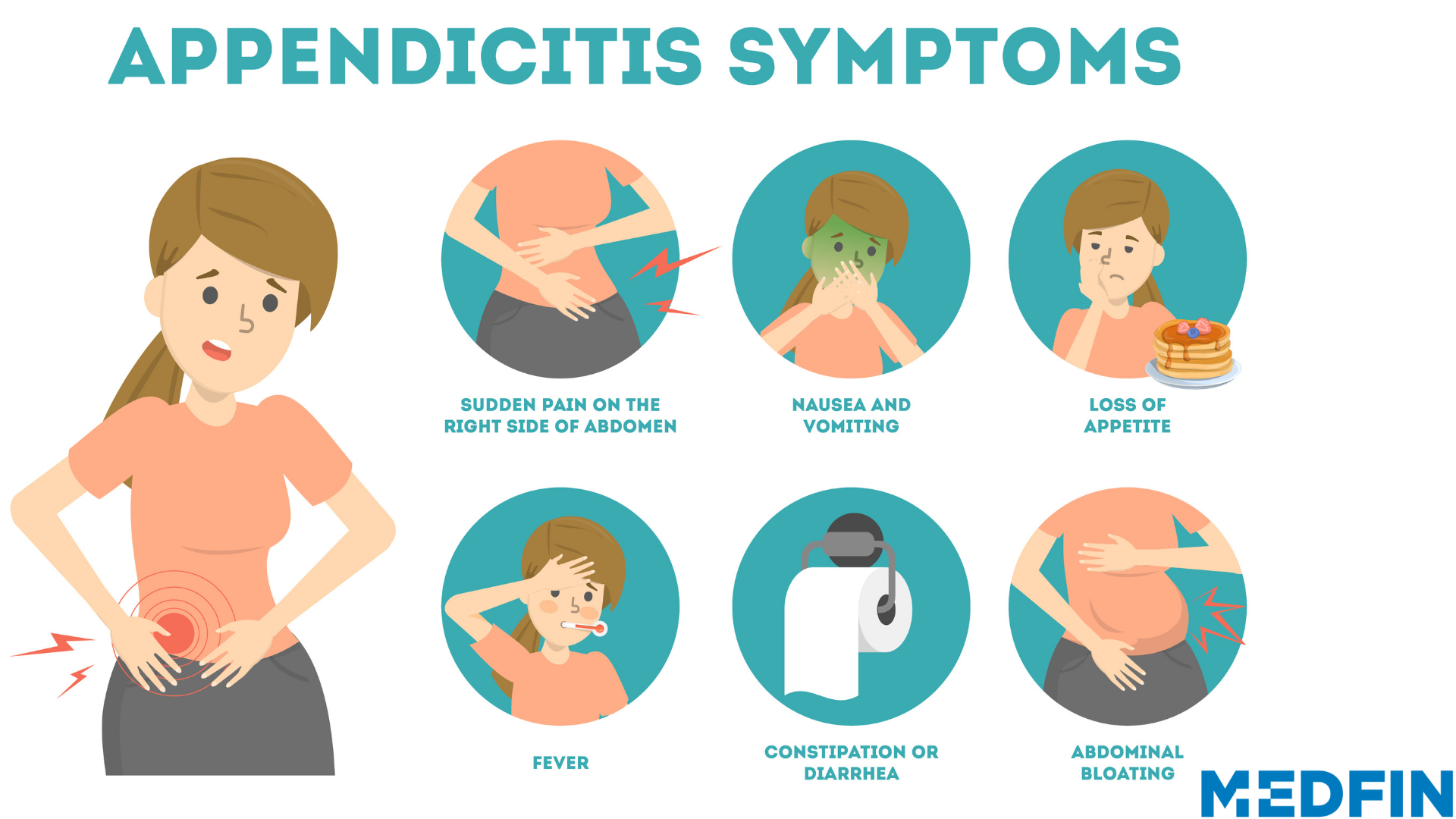 In the presence of inflammation in the feces, a large number of leukocytes, mucus are found. Stool culture is performed, Gregersen’s reaction.
In the presence of inflammation in the feces, a large number of leukocytes, mucus are found. Stool culture is performed, Gregersen’s reaction. With their ineffectiveness, herbal remedies, osmotic laxatives, oils for oral administration are used.
With their ineffectiveness, herbal remedies, osmotic laxatives, oils for oral administration are used.